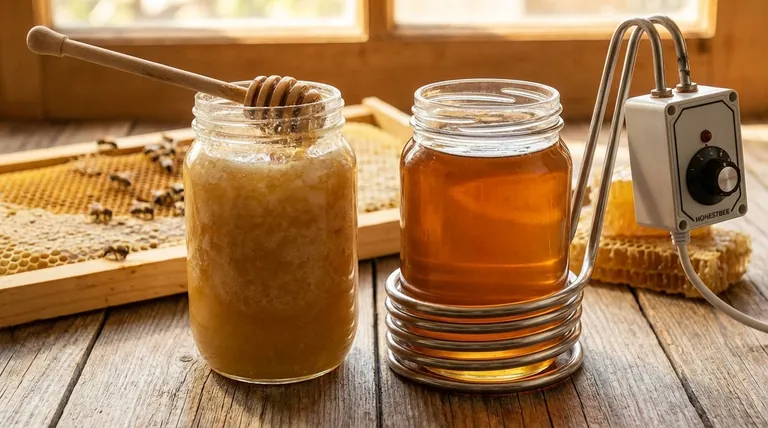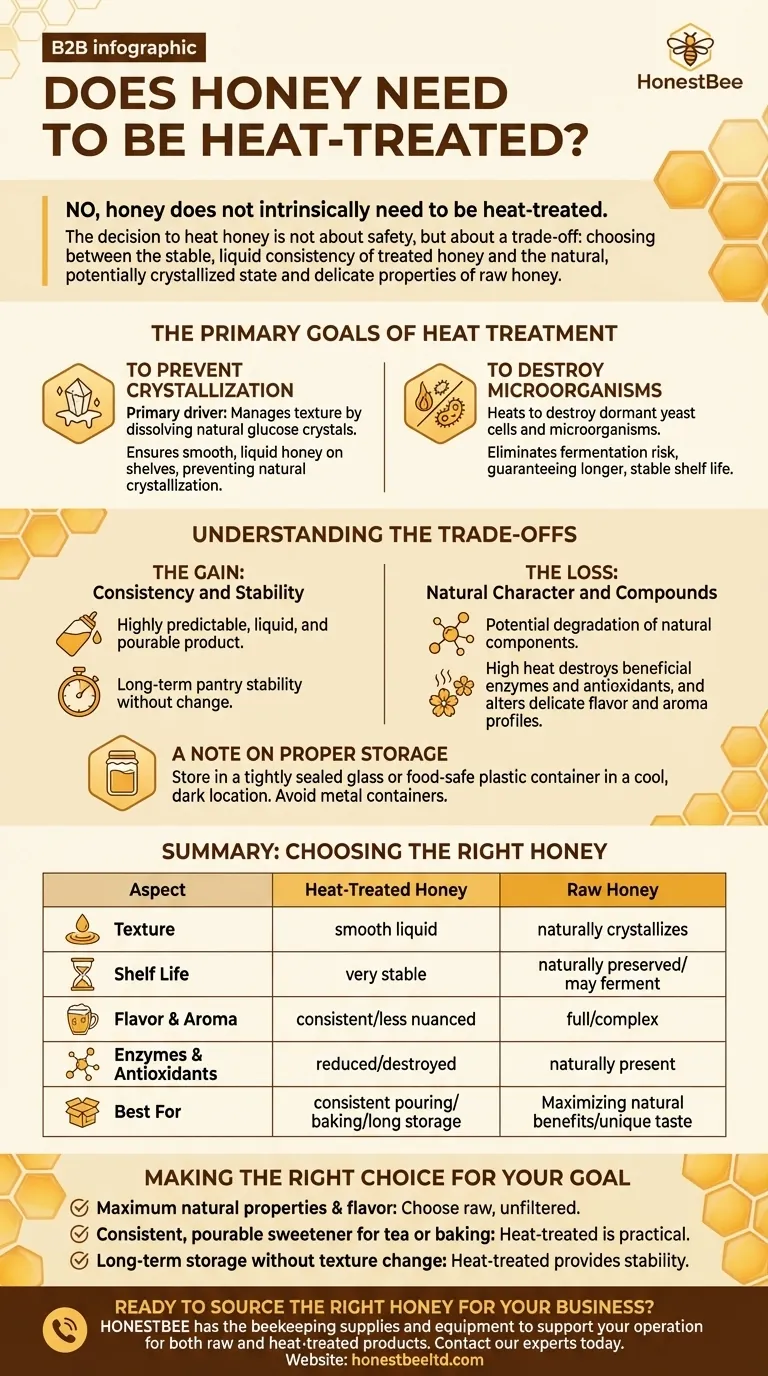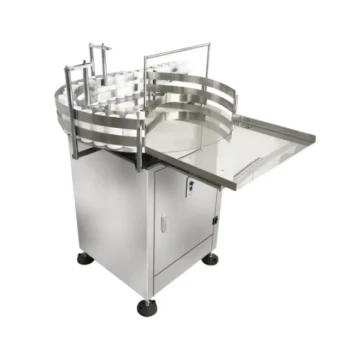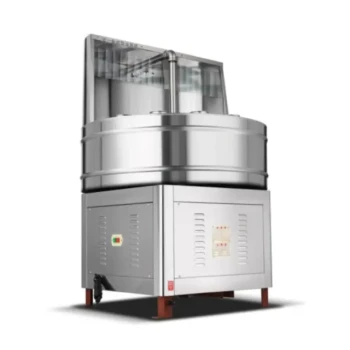No, honey does not intrinsically need to be heat-treated. Raw honey is naturally preserved and safe to eat. Heat treatment is an industrial processing step introduced primarily to control the honey's physical state for commercial appeal and to destroy microorganisms that could cause spoilage.
The decision to heat honey is not about safety, but about a trade-off: choosing between the stable, liquid consistency of treated honey and the natural, potentially crystallized state and delicate properties of raw honey.

The Primary Goals of Heat Treatment
Commercially processing honey often involves heating, a step technically known as pasteurization. This is not done because raw honey is inherently unsafe, but to achieve two specific goals that are important for a mass-market product.
To Prevent Crystallization
The primary driver for heat-treating honey is to manage its texture. Heating dissolves the natural glucose sugar crystals that cause honey to solidify over time.
This ensures the honey remains smooth and liquid on the grocery store shelf, which many consumers have come to expect. Crystallization is a natural process, not a sign of spoilage, but heat treatment prevents it.
To Destroy Microorganisms
Heating also destroys dormant yeast cells and other microorganisms that may be naturally present in honey.
While the low moisture content of honey prevents these from growing, killing them completely eliminates any remote chance of fermentation or spoilage, thus guaranteeing a longer and more stable shelf life.
Understanding the Trade-Offs
Choosing between raw and heat-treated honey involves understanding what is gained and what is potentially lost during the heating process. There is no single "best" type; the right choice depends on your priorities.
The Gain: Consistency and Stability
With heat-treated honey, you get a highly predictable product. It will be liquid, easy to pour, and will maintain that state for a very long time in your pantry without changing.
This makes it a reliable and convenient sweetener for everyday use.
The Loss: Natural Character and Compounds
The downside of high heat is the potential degradation of some of honey's natural components.
High temperatures can destroy or reduce the activity of beneficial enzymes and antioxidants. It can also alter the more delicate and nuanced flavor and aroma profiles that are unique to the honey's floral source.
A Note on Proper Storage
Regardless of the type, honey should be stored in a tightly sealed container in a cool location away from direct sunlight. It is best to avoid metal containers, as the honey can oxidize over time. Glass or food-safe plastic is ideal.
Making the Right Choice for Your Goal
Your intended use for the honey is the best guide for deciding which type to purchase.
- If your primary focus is on maximum natural properties and unique flavor: Choose raw, unfiltered honey to experience its full enzymatic and aromatic character.
- If your primary focus is on a consistent, pourable sweetener for tea or baking: Heat-treated honey is a practical and economical choice, as its subtle properties would be altered by heat anyway.
- If your primary focus is on long-term storage without any change in texture: Heat-treated honey provides the greatest stability against crystallization and fermentation.
Ultimately, understanding why honey is heated empowers you to select the product that best aligns with your culinary or wellness goals.
Summary Table:
| Aspect | Heat-Treated Honey | Raw Honey |
|---|---|---|
| Texture | Stays liquid and smooth | Naturally crystallizes over time |
| Shelf Life | Very stable, low spoilage risk | Naturally preserved, but may ferment |
| Flavor & Aroma | Consistent, but may be less nuanced | Full, complex flavors from floral source |
| Enzymes & Antioxidants | May be reduced or destroyed by heat | Naturally present and active |
| Best For | Consistent pouring, baking, long storage | Maximizing natural benefits and unique taste |
Ready to Source the Right Honey for Your Business?
Whether you supply raw honey purists or need a stable, heat-treated product for your customers, HONESTBEE has the beekeeping supplies and equipment to support your operation. We provide commercial apiaries and distributors with the reliable, high-quality tools needed for efficient honey production and processing.
Contact our experts today to discuss your specific needs and discover how our wholesale-focused solutions can enhance your product line and profitability.
Visual Guide

Related Products
- Professional Thermostatic Conical Honey Melter
- Honey Concentrating Vacuum Heating Thickening Machine Dehumidifier for Honey
- Economy Small Scale Honey Dryer Dehumidifier Thickening Machine
- 0.5T Capacity Honey Dehumidifier Dryer with Vacuum Heating and Thickening Filtering Machine
- 8-Frame Electric Self-Reversing Honey Extractor Spinner for Commercial Honey Extraction Equipment
People Also Ask
- How to permanently decrystallize honey? Embrace Its Natural State for Maximum Quality
- Why is heating honey sometimes necessary? The Essential Guide to Processing & Quality
- What are the negative effects of overheating honey? Preserve Your Honey's Natural Quality
- What is melter honey used for? A Low-Cost Ingredient for Bakers and Brewers
- At what temperature does honey flow? Preserve Quality with the Perfect 95°F Sweet Spot



















